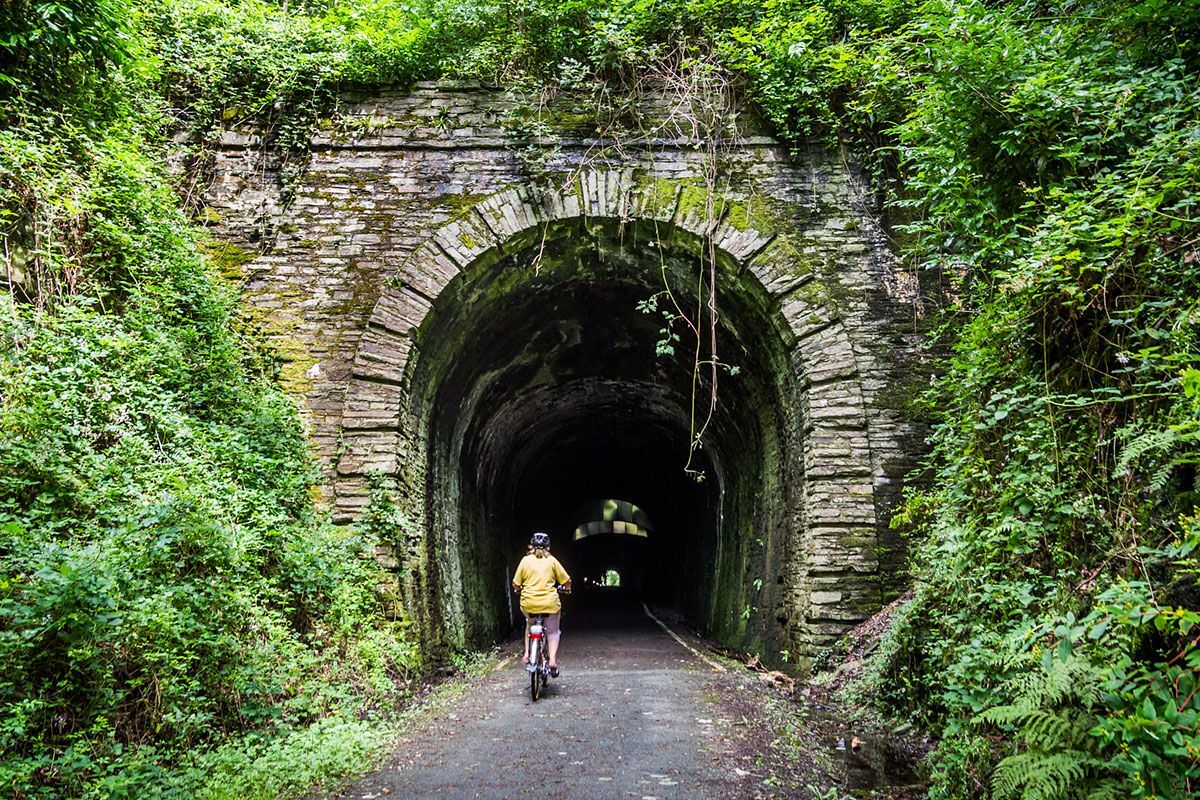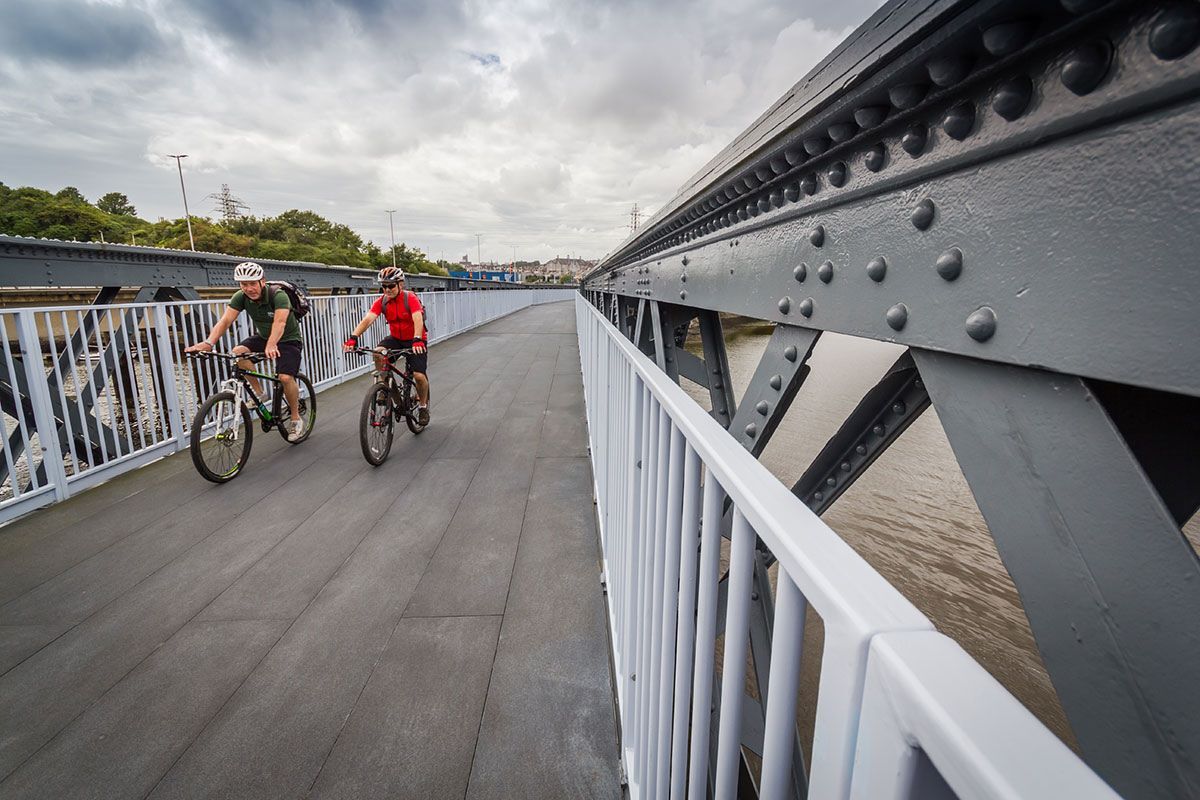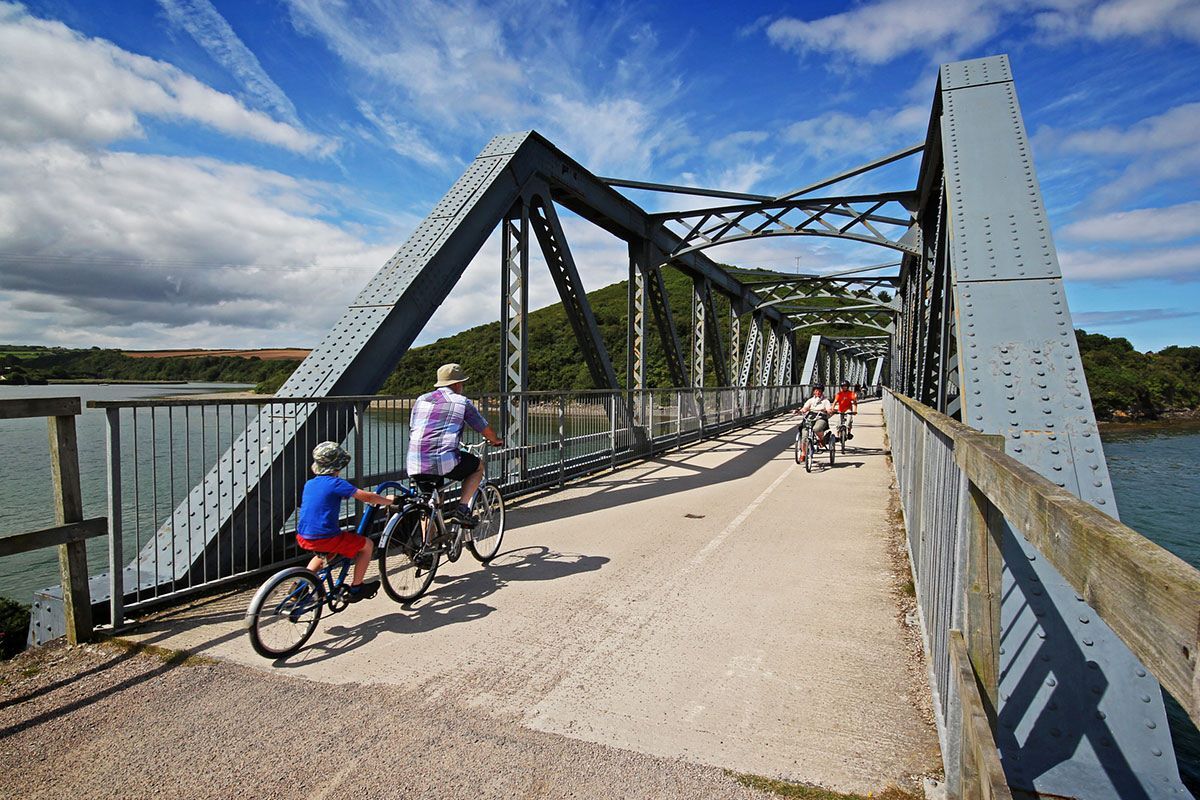
Since West Country Voices published my article Blocked by the ‘burdensome estate‘ people from all over the country have contacted me with similar examples of apparent official vandalism. Despite the Department for Transport (DfT) publishing a cycling and walking plan for England which ostensibly “sets out a vision for a travel revolution”, part of that same department still seems set quietly to undermine it.
Organisations seeking to use disused tunnels and bridges to create safe off-road routes claim that 134 structures currently managed as part of the Historical Railways Estate (HRE) are threatened with demolition or infill. Campaigners have circulated this map. Particularly contentious examples include the Queensbury Tunnel in West Yorkshire, and bridges vital for the Alnwick Greenway. In response to these threats, the ‘HRE Group’ – an alliance of engineers, cycling campaigners and greenway developers – has started a petition calling on the DfT to “protect our railway heritage from Highways England’s wrecking ball”.
Campaigners seeking to use these assets – for example, to create safe crossings of busy roads – tend to be met with a mixture of bland but empty assurances and technical obfuscation. A good example is the correspondence with Chris Heaton-Harris MP, put in the public domain by the Somerset Rail to Trail project. Despite these frustrations, Sonia Kundu, one of the project founders, believes that by making an effort to understand the concerns of Highways England and the DfT, and showing how they can be addressed, it should be possible to agree a way forward. To that end, the project is seeking to work with them to assess the condition of all relevant structures in Somerset and their potential for alternative use.
A more radical solution might be for HRE to hand over some of its key structures to a body charged with promoting their use for sustainable transport. They would have to come with some form of ‘dowry’ of course, since no organisation could just pick up the costs involved. HRE would save the (often considerable) costs of decommissioning, which could certainly be handed over; and a body that saw their potential as community assets would be far better placed to draw in other sources of funding than one that thinks only in terms of liabilities.
If this sounds too idealistic it is worth noting that it has already been done. When British Rail was privatised a portfolio of assets was transferred to Railway Paths – a charity expressly created to use them to promote sustainable transport routes. Its achievements include the preservation of structures along the route of the former Plymouth to Launceston line allowing the creation of the Plym Valley Trail in Devon, just one of many of their projects across England. Other structures have similarly been transferred in subsequent years.

It’s just a pity that so few people know about this potential route to the rescue and repurpose of old railway assets. The cycling and walking plan for England, despite promising to put cycling at the heart of transport decision making, makes no mention of it.
A further issue where the DfT is strangely silent is that of land acquisition. A major impediment to the creation of sustainable transport routes is that much of the former railway track has been sold off and is in private hands. Private landowners can be just as keen as HRE to erase old railway structures. This was illustrated by a recent case in South Somerset where a cutting is being used as a dump despite clear potential to create a new greenway. A serious network of off-road paths and trails will only be possible if access can be negotiated or the land acquired outright. Again, the cycling and walking plan makes no mention of the problem.
Although the DfT seems silent, work with the Department for Environment, Food and Rural Affairs (DEFRA) offers a possible way forward. The Somerset-based Trails Trust is working with the Mendip Hills area of outstanding natural beauty (AONB) on a trial for the new environmental land management scheme (ELMS), which will replace payments under the Common Agricultural Policy. ELMS will offer landowners payment in return for the provision of public goods. Paying for improved public access therefore might be the key to unlocking an expanded network of bridleways suitable for cyclists and equestrians. The trial, which will report later this year, will seek to establish what sort of incentives might be needed to make progress.
If negotiations and financial inducements fail, however, there may be a need to contemplate compulsory purchase. Despite local authorities having the power to use compulsory purchase orders (CPOs) to help create multi-user paths, they seem strangely reluctant to use them even though they do not hesitate to do so for road improvements. Cornwall Council, however, seems to have grasped the nettle.

Cornwall is planning an ambitious series of routes, known as the Saints Trails, aided by £17.1m from Highways England and £2m from its own resources. When completed, the trails will provide 30 kilometres of multi-user paths linking communities and providing opportunities for both commuters and recreational users. A resolution agreed by the cabinet provides that in the event of a negotiated arrangement with a landowner not being possible the council will exercise its powers to use compulsion. It is seen as a last resort, but the threat of compulsion often leads to a negotiated outcome.
The use of CPOs is always contentious and time consuming, which has resulted in a backlash against Cornwall’s plans. It would perhaps have been easier had they had time to assemble the land packages first and fund the construction work on a longer timescale. Nevertheless, the council is to be congratulated for recognising that to create the infrastructure for sustainable transport the public good ultimately needs to take priority over vested interest.
It is to be hoped that their example will inspire others including in Somerset, where progress to extend the Strawberry Line and complete the Somerset Circle has stalled through the refusal of many landowners even to come to the table. Since “empowering and encouraging local authorities” is one of the four key themes of the cycling and walking plan, it is disappointing (though sadly not surprising) that CPOs are not mentioned.
It’s easy enough for the DfT to lecture us on the benefits of walking and cycling. What we really need is a serious upgrade of infrastructure to allow us to do so safely.





